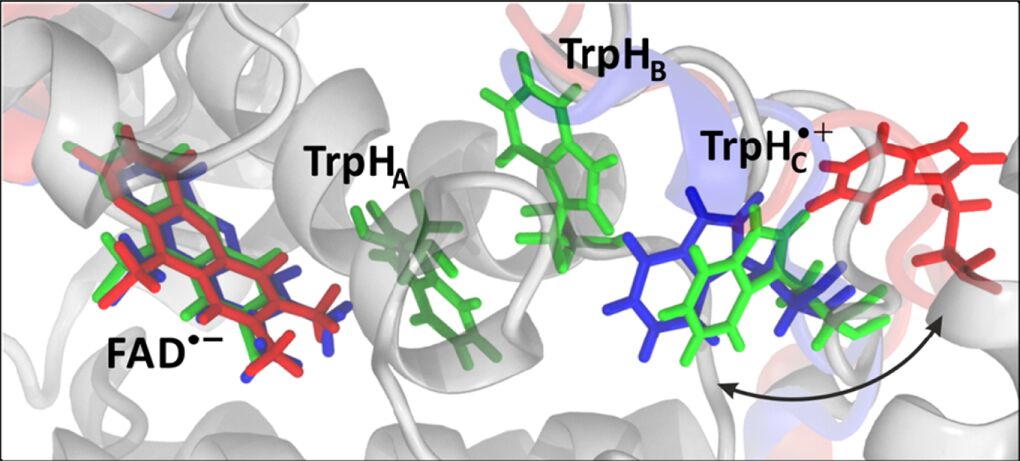Electron spin relaxation can enhance magnetic compass sensors
Reporting their results in the New Journal of Physics, scientists have taken a step forwards in unravelling the inner workings of the avian compass - a puzzle that has captivated researchers for decades. The team, led by a group at Oxford University, is exploring the popular hypothesis that birds orientate themselves thanks to light-induced, magnetically sensitive chemical reactions, which take place in proteins known as cryptochromes present in the retina.
Peter Hore, a biophysical chemist at Oxford University, who is heading up the study, commented: “The principle that chemical transformations can respond to very weak magnetic fields, known as the radical pair mechanism, is unquestionably genuine. What is not yet proven is whether this mechanism lies at the heart of avian magnetoreception.”
According to Hore, probably the most serious stumbling block is whether the spin coherence in the radicals (the short-lived chemical intermediates responsible for the magnetic field effect) could last long enough to allow a magnetic field as weak as the Earth’s to alter the photochemistry of a cryptochrome.
To find out more, the team has built a computational model focusing on the internal magnetic interactions within and between the radicals involved in the process. The simulations allow the scientists to examine the modulation of these interactions caused by thermal fluctuations in the positions of the radicals in their binding sites in the cryptochrome.

Chemical clues: researchers are studying the reaction pathways of free radicals to discover more about avian magnetoreception
Examining the data, the group observes that the effect of a weak, Earth-strength, magnetic field is sufficient to change the proportion of radical pairs that proceed along two competing chemical reaction pathways. “The effect happens in such a way that the yield of the signalling state of the protein should depend on the direction of the magnetic field with respect to the cryptochrome molecule,” Hore added. “Furthermore, our results show that the loss of coherence caused by certain sorts of internal magnetic interactions and molecular dynamics could actually enhance, rather than degrade, the sensitivity of a cryptochrome-based magnetic compass sensor.”
Thinking further ahead, the researchers highlight that their findings could benefit the development of low-cost and more environmentally-friendly electronic devices. “Certain organic semiconductors (OLEDs, for example) exhibit magnetoelectroluminescence or magnetoconductance, the mechanism of which shares essentially identical physics with radical pairs,” said Hore. “I believe there is scope for the design and construction of electronically addressable devices, based on principles learnt from studies of the avian compass, for determining the presence, intensity and direction of weak magnetic fields using cheap, non-toxic organic materials.”





